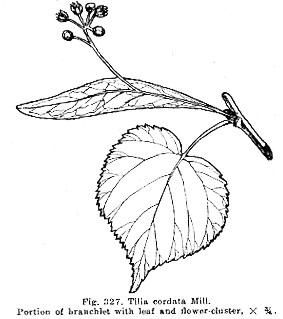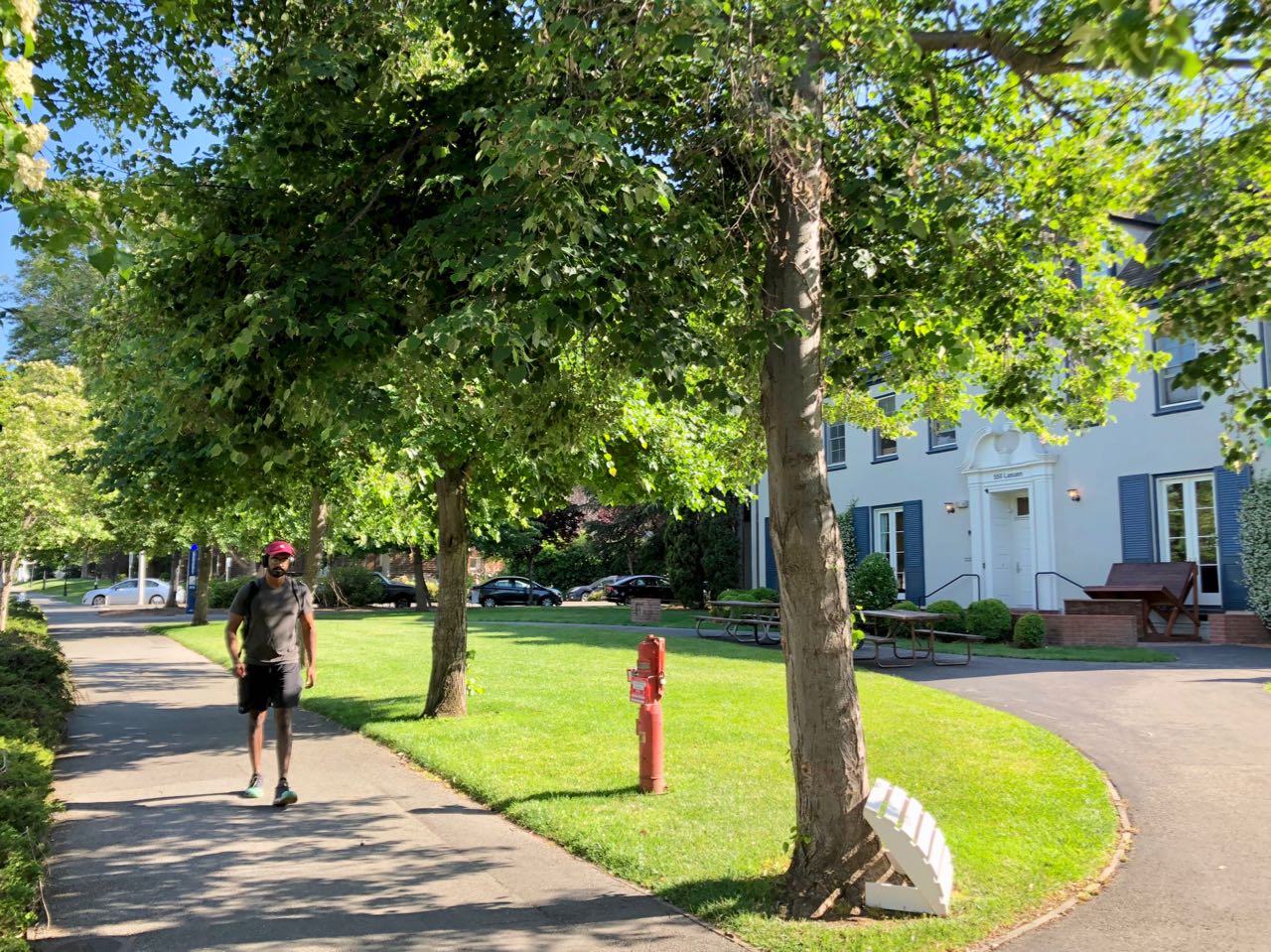Tilia cordata
 little-leaf linden
little-leaf linden

A pleasant deciduous tree with heart-shaped toothed leaves about 3 inches across and with a point. The leaf is dark green above, paler underneath, and has rusty tufts of down in the rib axils. The leaves alternate between left and right handed, successive leaves being mirror images of each other. A distinctive feature of lindens is the way the flower stalk rises from the middle of a special leaf-like bract. The flower buds are 3/16-inch green knobs, the small white flowers are fragrant, and the fruit is a brown furry ¼-inch nut, its length slightly greater than its diameter, in a five-ribbed hard shell containing a single kernel. Viewed end-on, the cross section is a pentagon.
If you have ever been to England you will have noticed that the most outstanding examples of wood carving in cathedrals, chapels, and stately homes seem to have been done by one man, Grinling Gibbons (1648–1720). All this work was carved from the wood of the lime tree, as the linden is known there. The fibrous bast was widely used for cordage and matting.
A row of trees grows at 550 Lasuen Mall; a few others are across the street at Mars (553 Mayfield Avenue). One tall specimen stands on the southwest corner of Stauffer II Physical Chemistry building; another, its companion, was removed in 2016 when Stauffer III was demolished. Half a dozen front Green Earth Sciences at the start of Panama Street. Three (reputed to be of trade name Greenspire) are on the northwest corner of Pi Beta Phi at the corner of Campus Drive East and Bowdoin Street (1967); they used to form a shady row with six more on the southwest side of Delta Delta Delta House, which were removed in 2015. Newer groups are in the courtyards northwest of Vidalakis Dining (2016) and northeast of Traitel Building (2017).
About this Entry: The main text of this entry is from the book Trees of Stanford and Environs, by Ronald Bracewell, published 2005. Removals noted June 2019 by Sairus Patel; all locations up to date (Jun 2019, SP). The Stauffer, Green Earth, and Greenspire specimens were noted as appearing to be hybrids; more investigation is needed. Family name updated to Malvaceae from Tiliaceae (Aug 2019, SP). Location updates, remove Storey and Muwekma notes, Traitel and Vidalakis locations added (Jun 2024, SP).




